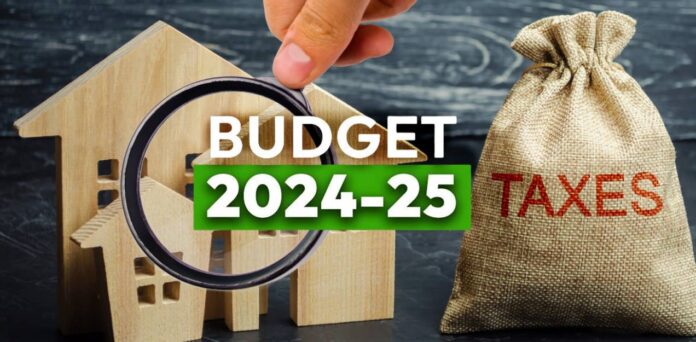The 2024-25 Budget recently presented to the National Assembly was meant to please the IMF. Previous Budgets have been meant to satisfy the IMF that its conditions were being met, but this one was being presented during a break in negotiations. In short, without any agreement on the next package, the IMF was getting what it wanted.
At the same time, the chances of the IMF refusing a failure are remote. Apart from Pakistan being obedient, it is also Too Big To Fail. If Pakistan were to default because of lack of ability to repay the loans it has taken from the international banking system, there is the risk of the international financial system unravelling. While Pakistan is not one of the countries to which the international banking system has one of the largest exposures, the system itself is not really robust enough to take a default in its stride.
One of the most interesting areas of difference to emerge from the Budget process has been the place of solar power in the energy mix of the country. The Water and Power Ministry has been pushing for some sort of restriction on its use. The reason is that solar energy does not fit into its financial model, which is still essentially that of the Tennessee Valley Authority, relying on power production at central locations like hydel dams or thermal power stations, and distribution to consumers.
Not just Pakistan, but the whole world, needs agile leaderships, capable of adapting to the rapid change that is ahead, not just heads of state and government, but at all levels. Renewables are here to stay. So are EVs. Like it or lump it
Solar power is used so far for domestic connections, and there are so far none of the major generation units anywhere. However, the model is that WAPDA purchases all the solar energy produced by domestic consumers, and that sum is deducted from the cost of consumption. It should be noted that the electricity which households consume is entirely supplied by WAPDA.
In this heat, WAPDA was expecting a bonanza, as electricity demand would shoot up because cooling devices like fans and air-conditioners were turned on.
However, in previous years, there were frequent power breakdowns and enforced loadshedding, ending in a few cases in public riots and attacks on distribution company offices. Is it purely a coincidence that the loadshedding in big cities is more limited? Or has the extra power generated and fed into the system by domestic consumers made a crucial dIfference? According to the World Bank, by January 31, 8822 MW of Pakistan’s total 46,045 MW generating capacity was solar. 28,800 MW was thermal, and 10,600 MW hydel. Solar power is thus by far a major component of Pakistan’s energy mix, but it is already causing WAPDA difficulties.
Is it simply a matter of not getting revenue? Another big difference in this model is that the investment in generation is being made by the consumer, not WAPDA. Apart from the purchase of the requisite solar panels and inverter, there are ancillary civil works, such as setting the panel frames on roofs. If WAPDA was handling this, this would have meant a tax-free revenue stream. Not to mention that one reason panels are priced where they are is because WAPDA is not involved in the purchase process. The only point WAPDA is involved in is installing the net-meters. There WAPDA men make money, offering a vision of what would have happened if they had been involved in installing solar power.
Another point at which WAPDA is vulnerable is the provision of electricity to government offices. If those offfices were to convert to solar power, WAPDA would be in real trouble. WAPDA can’t live with those offices, and can’t live without them. One reason WAPDA can’t live with them is because they run up large arrears on the plea that they are essential, and WAPDA dare not cut them off. Office ACs are run hours before the sahib arrives, the bill is not paid, and the money used for something else (like biscuits for the sahib’s elevenses). One reason WAPDA can’t live without them is that they have to pay up sometime or the other.
However, the root of the DISCOs’financial problem is that they are bound to cover the capacity payments to the Independent Power Producers. The IPPs are paid two sums. One consists of capacity payments. No matter how long the IPPs run, or if they don’t run, they are paid as id running at full capacity, The second component is the cost of the fuel they consume. The fuel cost is a pass-through item, and depends on how much the IPPs actually operate. This is quantified in the Fuel Adjustment Charge allowed to the DISCOs.
The more the IPPs are operated, the more fuel they will use, which is imported, and which is to be paid by the consumer. The more solar power is used, therefore, the less the IPPs will be asked to operate, and ultimately, the less the fuel that will have to be imported. In that way, the circular debt will not build up, or at least be slowed. Solar power thereby addresses two concerns of the IMF. First, it is green (a renewable), and second, its impact on Pakistan’s foreign exchange crisis will be positive.
The government seems to have plumped for speeding up imports of inverters, solar panels and lithium-ion batteries. The batteries are particularly dangerous for solar-power opponents, because they attack one of the main objections to solar power, that it needs sunlight. Once the problem of storing electricity generated is solved by the technologists, the need for an off-peak supplier, which all that a WAPDA DISCO remains for a solar-powered house, diminishes accordingly. Storage will allow domestic consumers to go off-grid. At present, they need the DISCO to supply power when the sun can’t. If the batteries can store the excess electricity at peak hours, why bother with a WAPDA connection?
It must not be forgotten that solar power is being installed not by environmental activists, but by the hardheaded middle-class trying to reduce their electricity bills. The movement towards electric vehicles again will not be out of any desire to save the oceans or glaciers, but to save on fuel bills.
The lithium-ion batteries also point to the government’s desire for electric-vehicle production. It is not just the power industry that is being revolutionized, but the transportation sector as well, as it transitions from being oil-based to electricity-based. Of course, there’ll be no point if the electricity put into a vehicle was originally generated by burning fossil fuels. That increases the attraction of renewables like solar. The Holy Grail is being sought, where the whole exterior of a vehicle is a solar panel, and the vehicle generates its own electricity. If enough can be stored as well, then the car can run even in unfavourable weather.
There are two elements at work. First, there are powerful lobbies operating, mainly the oil lobby. Solar power, and EVs powered by renewables, mean that petroleum moves from ‘liquid gold’ to gunk. While still useful in making plastics, petroleum will lose its centrality, and a lot of its value. Incidentally, plastics are also being damned as polluters, especially marine polluters. Oil, it should not be forgotten, is big business internationally. Second, plain dumb resistance to change. Apart from the odd maverick, decision-makers are usually 50 and above. Adapting to new realities is a hassle. Just before it collapsed, the USSR was headed by gerontocrats. The USA now is electing to office septuagenarians. Pakistan has one in office, his elder brother and an aspirant in jail.
Not just Pakistan, but the whole world, needs agile leaderships, capable of adapting to the rapid change that is ahead, not just heads of state and government, but at all levels. Renewables are here to stay. So are EVs. Like it or lump it.






















